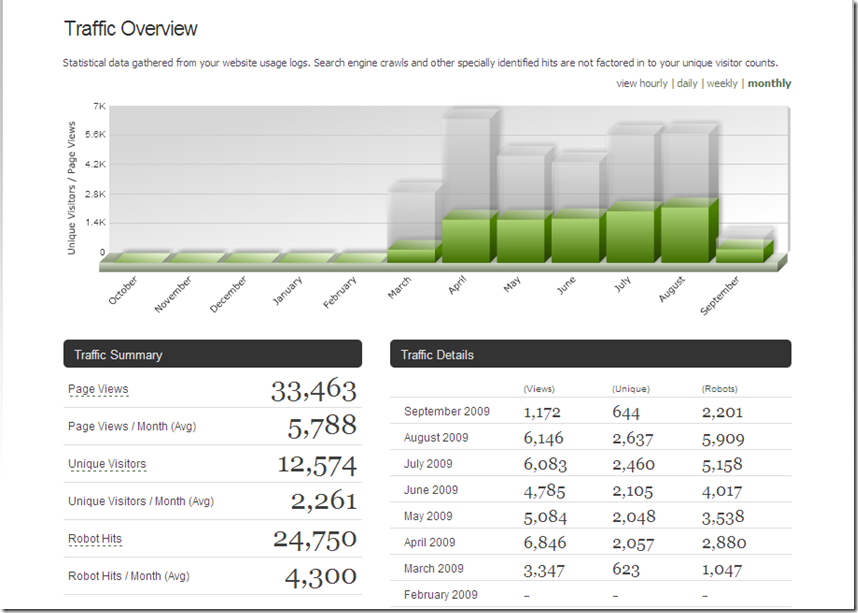The Mullet Blogging Manifesto
/Blogging is more art than science. My personal blogging style can perhaps best be described as mullet blogging. No, not the “business in the front, party in the back” haircut that I tried to rock back in the '80s (I couldn't pull it off, had to settle for a “tail” and had to cut that off because it made me look like an idiot – OK, more idiotic than usual). By mullet blogging I mean:
“Take yourself and your blog seriously, but still have a sense of humor about both.”
As a mullet blogger, I hold the following truths to be self-evident, but I decided to write them down anyway.
Blogging is All about You
Not you meaning me, the blogger — you meaning you, the reader.
Blogging should always focus on the reader and provide them assistance with a specific problem, even if that problem is boredom or simply a need for entertainment. Don't worry about your readers agreeing with you. They will either thank you for your help or tell you that you're an idiot – either way, you have started a conversation, which should always be your blogging goal.
Brian Clark recently shared something to think about using the following quote from Robert McKee:
“When talented people write badly it’s generally for one of two reasons:
Either they’re blinded by an idea they feel compelled to prove,
Or they’re driven by an emotion they must express.
When talented people write well, it is generally for this reason:
They’re moved by a desire to touch the audience.”
B = U2C3
Blogging = Unique and Useful content that is Clear, Concise, and Consumable.
The conventional blogging wisdom is to be both Unique and Useful. Although I normally like to defy conventions, I have to agree with the wise ones on these fundamentals.
One of the most important aspects of being unique is writing effective titles. Most potential readers scan titles to determine whether or not they will click and read more. There is obviously a delicate balance between effective titles and “baiting,” which will only alienate potential readers.
If you write a compelling title that makes me click through to an interesting post, then “You Rock!” However, if you write a “Shock and Awe” title followed by “Aw Shucks” content, then “You Suck!”
Therefore, your content also has to be unique – your topic, position, voice, or a combination of all three.
One of the most important aspects of useful is “infotainment” – that combination of information and entertainment that, when done well, can turn potential readers into raving fans. Just don't forget about the previous section – your content has to be informative and entertaining to your readers.
The key to good blogging is to follow the Three C’s – Clear, Concise, Consumable.
The attention span of a blog reader is not the same as a reader of books, newspapers (they still exist, right?), magazine articles, or the audience for presentations. Most people only scan blogs, rarely read a full post and even more rarely leave a comment – regardless of how well the blog post is written.
Write blog posts that get to the point and stay on point (i.e., clear), are no longer than they need to be (i.e., concise), and are formatted to be easy to read on a computer screen (i.e., consumable).
Laugh, Think, Comment
The three things that you want your readers to do.
Although it is not as blatantly formulaic as the title of the previous section, here is another method to my blogging madness:
- Open with a joke
- Say something thought provoking
- End with a call to action
It's as easy as 1-2-3! In my defense, I didn't say open with a good joke. But seriously, humor can be a great way to start a conversation and hold your readers' attention for those few precious additional seconds while you are getting to your point. Obviously, there will be times when the seriousness of your subject would make comedy inappropriate, and if you are not naturally inclined to use humor, then you shouldn't try to force it.
Thought provoking content doesn't have to mean deep thoughts. There is no need to channel Jean-Paul Sartre, for example. However, to paraphrase Sartre: “Hell is other people's boring blogs.”
Obviously, comments are not the only type of call to action. However, blogging is a conversation facilitated by the dialogue and discussion provided via comments from your readers. Without comments, the conversation is only one way.
I love the sound of my own voice and I talk to myself all the time (even in public). However, the two-way conversation provided via comments not only greatly improves the quality of my blog content — much more importantly, it helps me better appreciate the difference between what I know and what I only think I know.
As Darren Rowse and Chris Garrett explained in their highly recommended ProBlogger book: “even the most popular blogs tend to attract only about a 1 percent commenting rate.” Therefore, don't be too disappointed if you are not getting many comments. Take that statistic as a challenge to motivate you to write blog posts that your readers simply can not resist commenting on.
Respond to the comments you do receive. This continues the two-way conversation and encourages comments from other readers. Make sure to never talk down to your readers (either in your blog post or your comment responses). It is perfectly fine to disagree and debate, just don't denigrate.
Obviously, you should block all spam (leading argument for using comment moderation) and never feed the troll.
Stories and Metaphors and Analogies! Oh, my!
I've a feeling we're not in Kansas anymore. Especially me, since I live in Iowa.
Darren Rowse recently shared some great tips about why stories are an effective communication tool for your blog, including a list of some of the different types of stories you can tell.
My blog uses a lot of metaphors and analogies (and sometimes just plain silliness) in an attempt to make my posts more interesting. This is necessary because I write about a niche topic, which although important, is also rather dull.
James Chartrand uses the term Method Blogging as (yes, you guessed it) a metaphor for blogging by comparing it to method acting. Try experimenting with different styles like an actor experimenting with different types of roles and movie genres.
Oftentimes, using stories, metaphors, and analogies in my content works very well. But I admit, sometimes it simply sucks.
However, I have never been afraid to look like an idiot. After all, we idiots are important members of society – we make everyone else look smart by comparison.
The King, Queen, and Crown Prince of Blogging
Meet the Blogging Royal Family: Content, Marketing, and Context.
Content is King. The primary reason that people are (or aren't) reading your blog is because of your content.
Marketing is Queen. “If you blog it, they will read.” Ah, no they won't — this ain't Field of Dreams. Some of the best written blogs on the Series of Tubes get hardly any love because they get hardly any marketing. In addition to providing RSS and e-mail feeds, I use social media (e.g., Twitter, Facebook, LinkedIn) to promote my blog content.
However, too many bloggers have a selfish social media strategy. Don't use it exclusively for self-promotion. View social media as Social Karma. Focus on helping others and you will get much more back than just a blog reader, a LinkedIn connection, a Twitter follower, or a Facebook friend. In addition to blog promotion (which is important), I use social media to listen, to learn, and to help others when I can.
Larry Brooks recently explained that although content may still be king, at the very least, you must pay homage to the new Crown Prince — Context. To paraphrase Brooks, context comes from clarity about your blogging goals, juxtaposed against the expectations and tolerances of your readers. Basically, this above all: to thine own readers be true.
Emerson on Blogging
“Nothing can bring you peace but yourself.”
One of my favorite writers is Ralph Waldo Emerson. The quote that started this section was pure Emerson. What follows is a slight paraphrasing of one of my all-time favorite passages, which comes from his essay on Self-Reliance:
“What I must do is all that concerns me, not what the people think. This rule, equally arduous in real and in online life, may serve for the whole distinction between greatness and meanness. It is the harder because you will always find those who think they know what is your duty better than you know it. It is easy in the world to live after the world's opinion; it is easy in solitude to live after our own; but the great blogger is one who in the midst of the blogosphere, keeps with perfect sweetness the independence of solitude.”
Bottom line — BE YOURSELF — Let your own personality shine through. Make people feel like they are having a conversation with a real person and not just someone who is blogging what they think people want to read.
I hope that you found at least some of this manifesto helpful. I also hope to see more of you around the blogosphere.
I'll be the balding blogger who used to almost have a mullet...






